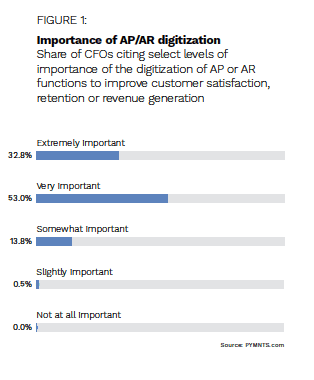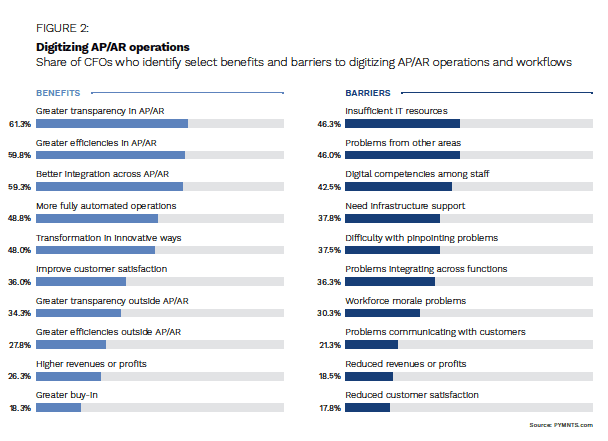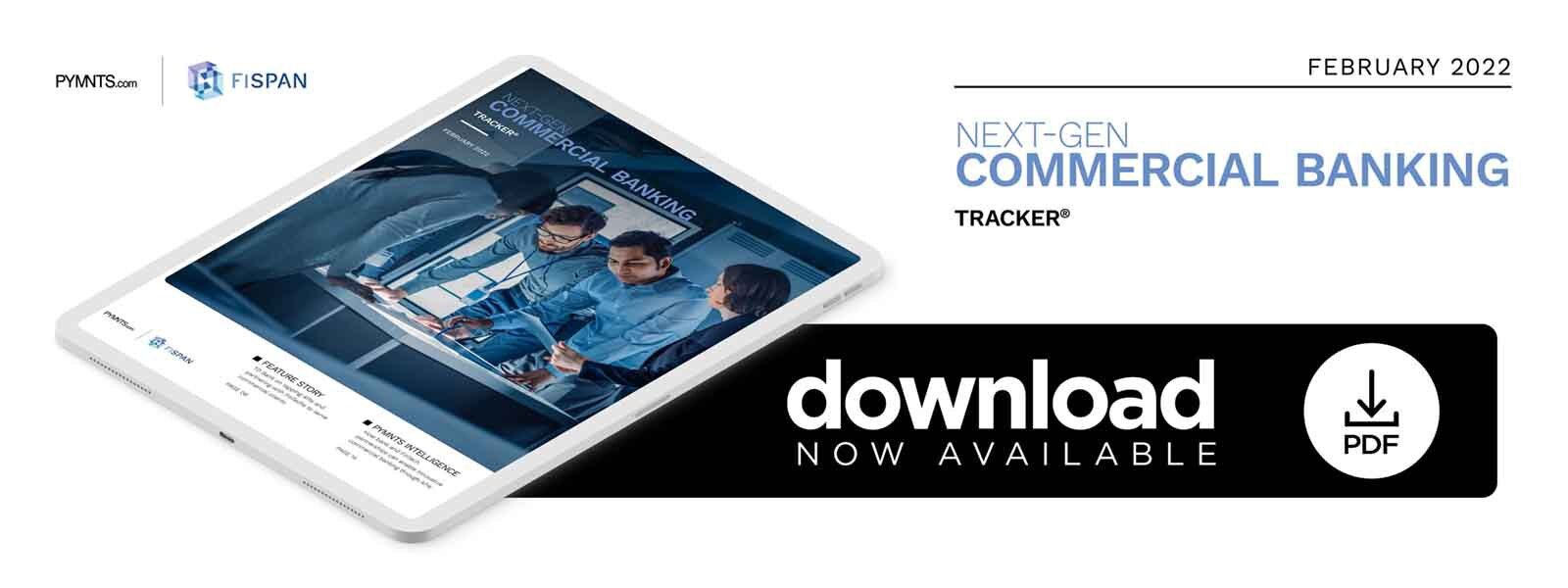PYMNTS Intelligence: Taking Down Commercial Banking Barriers With APIs

For many chief financial officers (CFOs), the pandemic drove home the merits of digital processes for saving for time and money. Even small businesses are pushing for efficiencies and accelerating cash flow with digitized accounting. As companies work toward making their operations more digital, some may struggle with ensuring even their own software programs play nicely with one another — let alone making sure they can easily integrate data from outside systems, such as their commercial banking partners’.
In one survey, 64% of companies reported that they lack full integration between their treasury management system (TMS) and enterprise resource planning (ERP) system, with many processes still being done manually that otherwise could be automated.
Application programming interfaces (APIs) offer a further advantage to digitization ef forts, providing the means for organizations to connect both internal and external systems and further automate processes. Serving as information intermediaries, APIs can help businesses and financial institutions (FIs) share data in real time, as well as automatically integrate that data directly into native workflows. APIs make it possible for businesses’ internal accounting and treasury programs to update real-time account balances automatically and make payments directly.
forts, providing the means for organizations to connect both internal and external systems and further automate processes. Serving as information intermediaries, APIs can help businesses and financial institutions (FIs) share data in real time, as well as automatically integrate that data directly into native workflows. APIs make it possible for businesses’ internal accounting and treasury programs to update real-time account balances automatically and make payments directly.
This month, PYMNTS examines how businesses and their banking partners can take advantage of APIs to streamline processes, further minimize the need for manual interventions and improve workflows’ overall efficiency.
The Impact of a Few Lines of Code
Anyone who has ever booked a flight or a hotel through a third-party website has experienced an API at work. APIs are what enable third-party travel websites to talk with airlines’ computer systems to find out which seats are available and how much they will cost, for example. Without having to invest in expensive and involved point-to-point integrations of disparate systems, companies can use APIs to share the necessary data securely in real time so that transactions are completed without serious problems or delays.
In corporate banking, APIs enable businesses to have that same flexibility between their financial services providers and their own internal systems. In terms of importing, interacting with and acting on banking data, companies can have the same level of access within their own systems as they have through their FIs’ mobile apps or online portals.
Many FIs already use APIs to connect internal systems, such as back-end and front-end servers, and this is how most APIs are used in current banking systems. That likely will change in the near future, however, as one report predicts that most new banking APIs will connect to external systems within the next three years. At the same time, only 30% of FIs used APIs at all at the start of 2021, and a significant portion of the sector still is catching up. Partnerships with FinTechs may offer the solution for FIs needing to bridge this gap.
Moving Forward With API Integration
Legacy FIs may view FinTechs as competitors disrupting their market sp ace, but FinTechs can be natural partners for rapidly deploying commercial banking APIs in an industry that seeks better and more efficient operations. It is possible for some larger FIs to create their own API solutions with significant investments of time and resources, but not all have that capacity. Even for banks that have the means, the reduced speed to market for in-house solutions can further slow technology adoption. In-house solutions also need ongoing improvements and maintenance, requiring continued investment of resources and personnel.
ace, but FinTechs can be natural partners for rapidly deploying commercial banking APIs in an industry that seeks better and more efficient operations. It is possible for some larger FIs to create their own API solutions with significant investments of time and resources, but not all have that capacity. Even for banks that have the means, the reduced speed to market for in-house solutions can further slow technology adoption. In-house solutions also need ongoing improvements and maintenance, requiring continued investment of resources and personnel.
Open APIs — those made publicly available to software developers — permit the maximum compatibility and integration possible while also broadening the range of FIs’ potential partners and vendors. One survey found that the desire to have open APIs to enable access to a broader range of partners and vendors was one of FIs’ most important drivers of modernizing payments infrastructure, beating out such desired outcomes as being cloud-ready and creating more real-time-capable processing. That prioritization has significant implications, as early adopters are likely to have an advantage over FIs that wait to implement digital solutions such as APIs.
A cohesive and effective digital banking presence will serve as an important differentiator for FIs, whether they are competing to attract new commercial customers or working to keep the ones they already have. The embedded banking experience that APIs create can make transactions as frictionless as possible while ensuring corporate customers can access banking products in the manner that best suits their workflows.
Ultimately, when it comes to realizing the promised benefits of APIs, FIs that take advantage of the tools already available on the market will save time and money compared to those starting from scratch.

